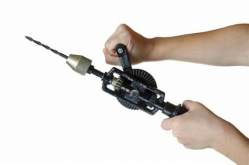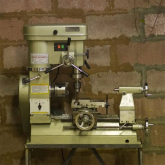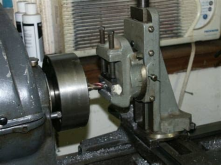You are using an out of date browser. It may not display this or other websites correctly.
You should upgrade or use an alternative browser.
You should upgrade or use an alternative browser.
Sol-Ark Inverters 8 and 12K
- Thread starter Super Fly
- Start date
fisherus
New Member
- Joined
- Nov 16, 2019
- Messages
- 93
The Sol-Ark 12K currently has communication ability built into it that, with some software implementation, will allow it to communicate with power wall systems. I don't see why they won't be able to eventually program BMS'S with an RJ-45 connection capability in the near future. Just remember, most engineers at Sol-Ark didn't think that they would work with LTO SCIB batteries less than a year ago. Didn't care about lithium batteries of any type as their focus was on nickel hydride and cobalt along with lead acid. As more lithium fans have shown their desire for lithium battery bank builds, Sol-Ark has opened up to them. First thing they did was increase the maximum charging voltage from 59V to 63V. Now they are building an outside edition, have communication ports and many other possibilities. Personally, I think that they are the best one out there. Now, I would like to get my system totally completed and using it 24/7.As usual I am not explaining myself well. For my purposes battery capacity and state of charge is a complete non issue. What is important to me is that the charger is turned off if any 1 cell gets too high. I also do not want to disconnect the inverter if this happens. I also dont want to run high current through the BMS so I am hoping at some point the Inverter/charger companies figure out a generic way for an external BMS, that knows the actual battery health at the cell level, to controll charge/discharge if and only when necessary if a cell becomes out of balance.
ArthurEld
Solar Wizard
I just ordered the outdoor version of the SolArk 12K. I am very interested in your over voltage setup.
The SolArk is installed with 20 380W panels. They replaced the meter yesterday, and sent the permission to operate this morning.@Haugen
Any updates with the Sol-ark?, i just discovered this inverters and wondering if you ended up buying it
I'll be turning it on by tomorrow without batteries. I'm getting bus bars made so the batteries look as good as they perform.
mrdavvv
Solar Enthusiast
- Joined
- Jan 14, 2020
- Messages
- 404
The SolArk is installed with 20 380W panels. They replaced the meter yesterday, and sent the permission to operate this morning.
I'll be turning it on by tomorrow without batteries. I'm getting bus bars made so the batteries look as good as they perform.
Just saw your other post a few moments ago... congrats!!.. let us know how it goes!
mrdavvv
Solar Enthusiast
- Joined
- Jan 14, 2020
- Messages
- 404
I bought a $200 Heltec BMS for my SolArk system. It has CAN and RS485. I have to wait for my cells to arrive before I can power it up.
I'm hoping that is before my solar install, so I can leverage the expertise of the installer.
The Alibaba vendor sent me their CAN info, but most of it is in Chinese. I think there is enough English for someone who knows how to read the protocol to decipher it. I'm just not that guy.
Need to wake you up again @Haugen
Im doing some numbers to decide either between some pylontech batteries or a DIY one with the Heltec BMS.. same as yourself.
Fits of all, what would be the main advantages of the inverter communicating with the battery?.
- Being able to cut the charge / discharge depending of SOC, without a hard turnoff from an external BMS
- Maybe read SOC? (Altough you mention before that Sol-Ark can calculate this even with "dumb" batteries.
And when you are building your DIY battery?, im very interested in your experiment.
ArthurEld
Solar Wizard
My little experience with the BMS shutting down the charging and discharging show no signs of a hard stop.
I haven't done it with the SolArk yet because I don't have it yet.
I don't plan to communicate to SolArk with the BMS.
And I will allow the BMS to shut down the charging and discharging. I have to do it at least a few times minimum.
I will purposely limit the amps when I am testing everything.
The BMS shouldn't be shutting things down often if ever once I'm done testing it.
SolArk has to be able to take the BMS shutting down charging/discharging. Otherwise, the SolArk would get damaged when you blow a fuse during charging/discharging.
I don't want to shut down charging/discharging repeatedly but it is going to happen and SolArk needs to deal with it.
I am fairly sure most people don't communicate to SolArk with their BMS.
Also, It is possible to harm SolArk programming CAM. So that should be part of your decision.
Haugen has more electronics experience that me so I'm sure he'll be fine. And when a few DIYers get CAM working I may jump on board.
The price for that technology will come down before long as well.
I haven't done it with the SolArk yet because I don't have it yet.
I don't plan to communicate to SolArk with the BMS.
And I will allow the BMS to shut down the charging and discharging. I have to do it at least a few times minimum.
I will purposely limit the amps when I am testing everything.
The BMS shouldn't be shutting things down often if ever once I'm done testing it.
SolArk has to be able to take the BMS shutting down charging/discharging. Otherwise, the SolArk would get damaged when you blow a fuse during charging/discharging.
I don't want to shut down charging/discharging repeatedly but it is going to happen and SolArk needs to deal with it.
I am fairly sure most people don't communicate to SolArk with their BMS.
Also, It is possible to harm SolArk programming CAM. So that should be part of your decision.
Haugen has more electronics experience that me so I'm sure he'll be fine. And when a few DIYers get CAM working I may jump on board.
The price for that technology will come down before long as well.
You are on track with the reasons for the CAN bus. If the SolArk knows the SOC straight from the BMS, it can cut itself off at the appropriate time without relying on the BMS to cut the power both on the charge and discharge ends.Need to wake you up again @Haugen
Im doing some numbers to decide either between some pylontech batteries or a DIY one with the Heltec BMS.. same as yourself.
Fits of all, what would be the main advantages of the inverter communicating with the battery?.
Do you know if the CAN compatibility with generic BMS's its an special implementation from Sol-Ark?. I was considering a Deye / Sunsynk but maybe they wont provide that.. so that could steer things to the SolArk Again. Al tough, seeing the guys that are reverse engineered the communication protocol with the web monitoring, and if thats suposed to work with the 3 brands, it would mean that the Sol-Ark doesn't have an special firmware and the Heltec BMS could work also with the sunynk's and deye's.
- Being able to cut the charge / discharge depending of SOC, without a hard turnoff from an external BMS
- Maybe read SOC? (Altough you mention before that Sol-Ark can calculate this even with "dumb" batteries.
And when you are building your DIY battery?, im very interested in your experiment.
I haven't seen the SolArk software in action. Waiting for my installer to flip the switch still. I'm pretty sure that I'll be able to set a % of charge to use that should stay within my BMS parameters. That will still be an estimate. I want the communication so that both devices are making decisions based on the same data
I am talking with some machinists to get some quality bus bars made. Those won't be ready until after the first of the year. My supplier said that they sent me a BMS that doesn't have CAN, so I'll have to run without that for a little while.
mrdavvv
Solar Enthusiast
- Joined
- Jan 14, 2020
- Messages
- 404
I am talking with some machinists to get some quality bus bars made. Those won't be ready until after the first of the year. My supplier said that they sent me a BMS that doesn't have CAN, so I'll have to run without that for a little while.
I dont have your patience, ill already be putting some cupper tubing instead of the busbars
Ill be watching your updates, thanks!
Ampster
Renewable Energy Hobbyist
Yes that is the big advantage on the charge side. One could still use voltage signals as a last resort to stop charging. On the discharge side in a grid tied installation the appropriate signal from the BMS could transfer load back to the grid. That would be a good scenerio when one wanted more reserve at the bottom in the event of a power outage.You are on track with the reasons for the CAN bus. If the SolArk knows the SOC straight from the BMS, it can cut itself off at the appropriate time without relying on the BMS to cut the power both on the charge and discharge ends.
I'm fortunate to work at a large corporation with lots of people who have side gigs, or know people who do. That's how I found affordable machinists.I dont have your patience, ill already be putting some cupper tubing instead of the busbars.
Ill be watching your updates, thanks!
Ots rather like buying the cells from China. To get the good price, you have to accept the time table. The first guy already came in way too high. Hoping the other guy will hook me up.
I posted about what I'm doing in another thread. I'll probably order extras to eliminate waiting later on.

DIY Busbar
Did you have any luck finding aluminum flange nuts with the norlock type flange? I found some aluminum lock washers but stopped looking. I'm keeping it simple and going with aluminum lock washers. I sourced them from Home Depot, of all places. I went with 1/4" size, which were much more...
ArthurEld
Solar Wizard
I'm a machinist but I don't have a machineI'm fortunate to work at a large corporation with lots of people who have side gigs, or know people who do. That's how I found affordable machinists.
Ots rather like buying the cells from China. To get the good price, you have to accept the time table. The first guy already came in way too high. Hoping the other guy will hook me up.
I posted about what I'm doing in another thread. I'll probably order extras to eliminate waiting later on.

DIY Busbar
Did you have any luck finding aluminum flange nuts with the norlock type flange? I found some aluminum lock washers but stopped looking. I'm keeping it simple and going with aluminum lock washers. I sourced them from Home Depot, of all places. I went with 1/4" size, which were much more...diysolarforum.com
Hedges
I See Electromagnetic Fields!
- Joined
- Mar 28, 2020
- Messages
- 20,535
You can buy copper stock from McMaster or online metals. Stainless bolts and nuts. Standoffs.
Drill a few holes and you have a busbar to join cables.
Two alternatives, depending on your budget and the size of your vehicle:

 www.harborfreight.com
www.harborfreight.com

Drill a few holes and you have a busbar to join cables.
I'm a machinist but I don't have a machine
Two alternatives, depending on your budget and the size of your vehicle:

9 Speed Vertical Milling Machine
Amazing deals on this 9 Speed Vertical Milling Machine at Harbor Freight. Quality tools & low prices.

ArthurEld
Solar Wizard
I have a drill press from Harbor Freight.
I was a manual and CNC machinist before I became an NC Programmer.
People buy all kinds of machines for their garage. Maybe I'll buy a cheap used CNC machine one day.
edit: That little milling machine looks pretty cool Hedges. Funny though, I'd probably look for a used Bridgeport.
I was a manual and CNC machinist before I became an NC Programmer.
People buy all kinds of machines for their garage. Maybe I'll buy a cheap used CNC machine one day.
edit: That little milling machine looks pretty cool Hedges. Funny though, I'd probably look for a used Bridgeport.
Last edited:
Hedges
I See Electromagnetic Fields!
- Joined
- Mar 28, 2020
- Messages
- 20,535
I don't have that one. I picked up a smaller, junkier one used/cheap:

But the vertical spindle is so stiff it won't start. Can't seem to remove pulley from top or otherwise get access to bearings, adjustment, or lube points.
I also have a 9" South Bend and milling attachment (right angle vice mount that goes on cross feed) but that's in a container on my mountain acreage.
I used machine tools a lot in school.
Now I use a cheap drill press or a corded/cordless drill for most work.
I have a conduit bender (up to 2") and a 2" power head for use with hand-held threading tools.
Hand held bandsaw, torch, arc welder for most fabrication.
I've seen (much) bigger mills used at auction, but I can barely get through my garage if I turn sideways so can't fit much.

But the vertical spindle is so stiff it won't start. Can't seem to remove pulley from top or otherwise get access to bearings, adjustment, or lube points.
I also have a 9" South Bend and milling attachment (right angle vice mount that goes on cross feed) but that's in a container on my mountain acreage.
I used machine tools a lot in school.
Now I use a cheap drill press or a corded/cordless drill for most work.
I have a conduit bender (up to 2") and a 2" power head for use with hand-held threading tools.
Hand held bandsaw, torch, arc welder for most fabrication.
I've seen (much) bigger mills used at auction, but I can barely get through my garage if I turn sideways so can't fit much.
ArthurEld
Solar Wizard
I think that is classified as a mill/turn. I bet that is nice to have.
DIYSolarShed
New Member
- Joined
- Oct 5, 2020
- Messages
- 46
Just installed and powered on a Sol-Ark 12K. So far it is working flawlessly and powers my EV car charger at 3.5KW without breaking a sweat.
More info on my setup here: https://diysolarforum.com/threads/s...5k-plus-solaria-xt370-semi-diy-install.15941/
More info on my setup here: https://diysolarforum.com/threads/s...5k-plus-solaria-xt370-semi-diy-install.15941/
ArthurEld
Solar Wizard
It is funny that you said you have a milling attachment for your lathe. I've worked in machine shops my whole life and I never heard of the Lathe tool holder called a milling attachment. But I looked it up and from what I can tell, before I was born they called that a milling attachment.I don't have that one. I picked up a smaller, junkier one used/cheap:
View attachment 30370
But the vertical spindle is so stiff it won't start. Can't seem to remove pulley from top or otherwise get access to bearings, adjustment, or lube points.
I also have a 9" South Bend and milling attachment (right angle vice mount that goes on cross feed) but that's in a container on my mountain acreage.
I used machine tools a lot in school.
Now I use a cheap drill press or a corded/cordless drill for most work.
I have a conduit bender (up to 2") and a 2" power head for use with hand-held threading tools.
Hand held bandsaw, torch, arc welder for most fabrication.
I've seen (much) bigger mills used at auction, but I can barely get through my garage if I turn sideways so can't fit much.
Today's mill/turns are used for milling features closely tied to the lathe axis.

Hedges
I See Electromagnetic Fields!
- Joined
- Mar 28, 2020
- Messages
- 20,535
Compound feed replaced with a right-angle (vertical) slide and vice, a milling attachment (file photo):

I tried to build a metal lathe in high school. I cut a few gears, and I built a compound feed.
Obviously bit off more than I could chew.

Southbend milling attachment FS ,possible trade
This is in great shape. Looks like original paint..chip from casting on one side, doesn't affect function, and has paint over it. All nut heads very clean and sharp, imperceptible run out.. very tight and smooth. $260 shipped USPS Flatrate. Possible trade for Diacro bender tooling, Millrite...
www.practicalmachinist.com
I tried to build a metal lathe in high school. I cut a few gears, and I built a compound feed.
Obviously bit off more than I could chew.
ArthurEld
Solar Wizard
I see, you are holding the milling cutter in the lathe Chuck and you move the part around. I'm sure you can do a lot with that.
I've held a drill in the tail stock to drill into the part. But I never seen an endmill in the chuck like that. I guess it must be common if it works.
I've held a drill in the tail stock to drill into the part. But I never seen an endmill in the chuck like that. I guess it must be common if it works.
Similar threads
- Replies
- 57
- Views
- 2K
- Replies
- 4
- Views
- 319


